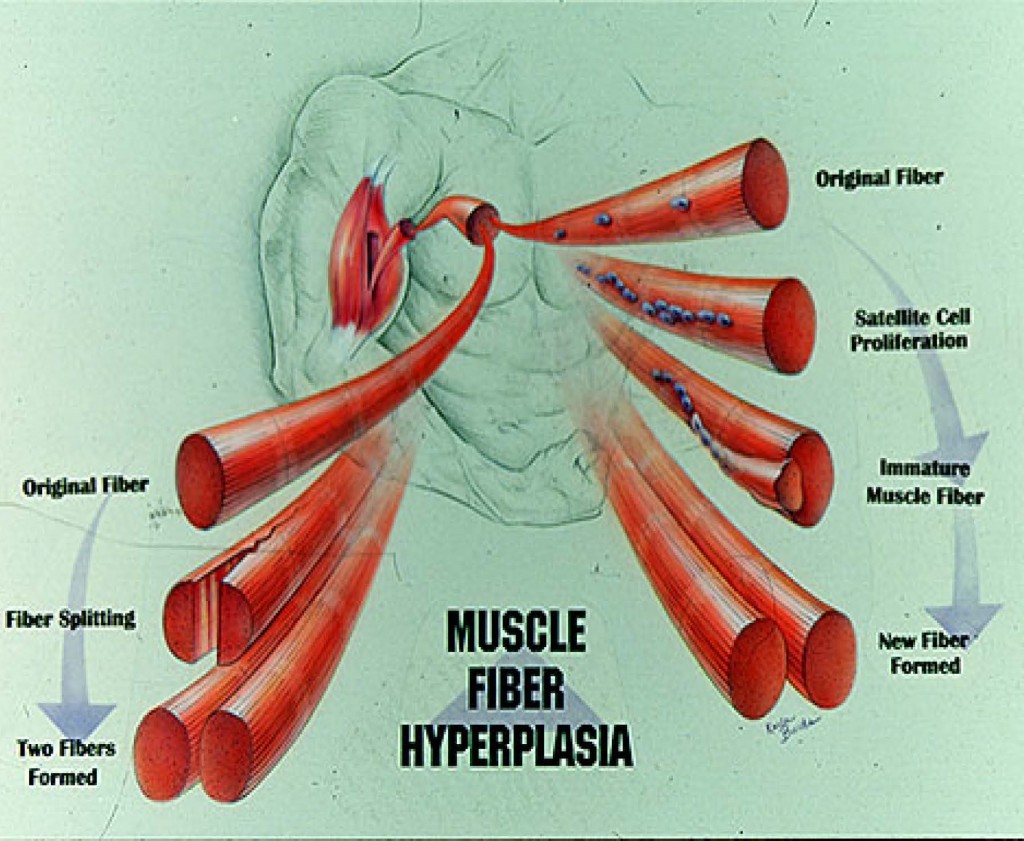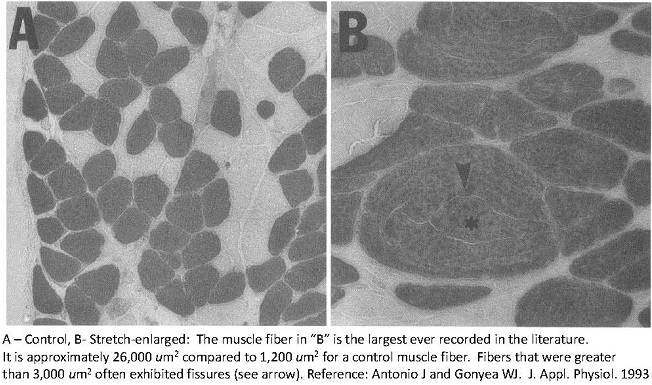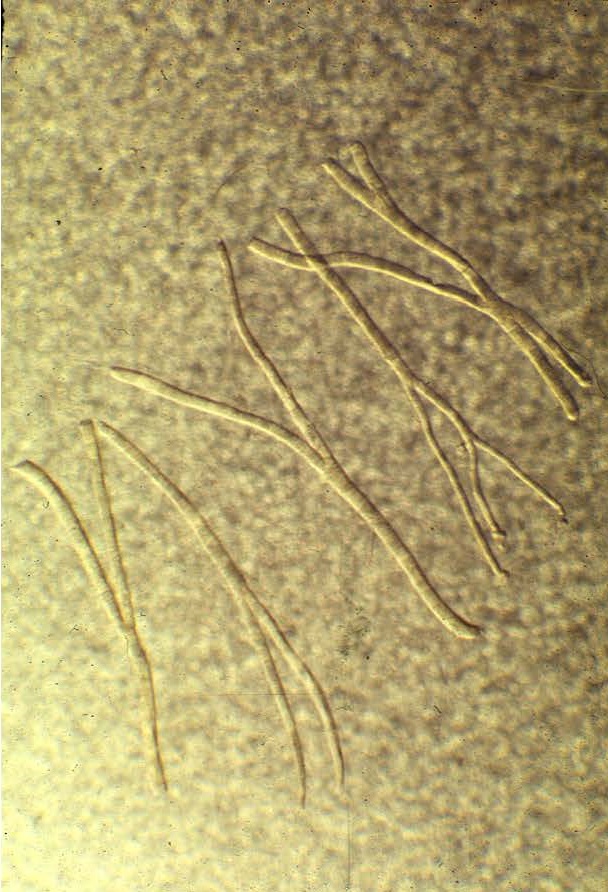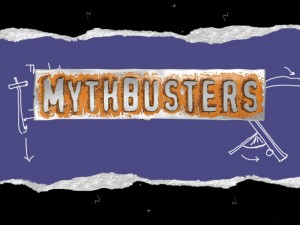gandhisays
Stage Pro
<header class="entry-header" style="margin: 0px; padding: 0px; border: 0px; font-size: 14px; vertical-align: baseline;">Skeletal Muscle Fiber Hyperplasia
</header>
I want to bring to light a topic that is of interest to many Muscle Chemistry members and anyone else who's interests, hobbies and professions (athletes, olympians etc..) alike include building muscle. Not many are aware of the research that has been published on muscle fiber hyperplasia.
Overall when it comes to this subject, the question that is always posted the most here at muscle chemistry is as follows:
Can we and do we not just as athletes and bodybuilders, but as human beings in general have the capacity to increase the number of skeletal muscle fibers? And if so, How, or by what process? Read on members, read on...
The Basics:
WHAT IS HYPERPLASIA?
Hypertrophy refers to an increase in the size of the cell while hyperplasia refers to an increase in the number of cells or fibers. A single muscle cell is usually called a fiber, muscle fiber or myo-fiber. Got it? GOOD! . Then you passed Muscle Chemistry 101 in Cell Biology. Nice!

HOW DO MUSCLE FIBERS ADAPT TO DIFFERENT TYPES OF EXERCISE?
If you look at a good marathon runner’s physique and compared him/her to a bodybuilder it becomes obvious that training specificity has a profound effect. We know that aerobic training results in an increase in mitochondrial volume/density, oxidative enzymes, and capillary density. Also, in some elite endurance athletes the trained muscle fibers may actually be smaller than those of a completely untrained person.
Bodybuilders and other strength-power athletes, on the other hand, have much larger muscles . That’s their primary adaptation; their muscles get bigger. All the cellular machinery related to aerobic metabolism (i.e., mitochondria, oxidative enzymes, etc.) isn’t necessary for maximal gains in skeletal muscle force output; in essence, you just need more contractile protein. We know that this muscle mass increase is due primarily to fiber hypertrophy; however, are there situations where muscles also respond by increasing fiber number? Ok, you now know the basics of training specificity.
You get to move on to advanced muscle chemistry 101.
.
EVIDENCE FOR SKELETAL MUSCLE FIBER HYPERPLASIA
Scientists have come up with all sorts of methods to study muscle growth in laboratory animals. You might wonder what relevance this has to humans. Keep in mind that some of the procedures which scientists perform on animals simply can’t be done on humans due to ethical and logistical reasons. Unless of course you support human sacrifice like the ancient Aztecs. Nonetheless, the more convincing data supporting muscle fiber hyperplasia emerges from animal studies. Some human studies have also suggested the occurence of muscle fiber hyperplasia. I’ll address those studies later. Unless you fall asleep first.
DOES “STRETCH” INDUCE FIBER HYPERPLASIA?
Please don’t confuse ‘stretch’ with doing yoga in your Lululemon pants. Not THAT kind of stretching. Instead, it’s a more painful type we’re talking about here. The avian stretch model was first used by Sola et al. in 1973 . In essence, you put a weight on one wing of a bird (usually a chicken or quail) and leave the other wing alone. By putting a weight on one wing (usually equal to 10% of the bird’s weight), a weight-induced stretch is imposed on the back muscles.
The muscle which is usually examined is the anterior latissimus dorsi or ALD (unlike humans, birds have an anterior and posterior latissimus dorsi). Besides the expected observation that the individual fibers grew under this stress, Sola et al. found that this method of overload resulted in a 16% increase in ALD muscle fiber number. Since the work of Sola, numerous smarty-pants science types have used this model . For example, Alway et al. showed that 30 days of chronic stretch (i.e., 30 days with the weight on with NO REST) resulted in a 172% increase in ALD muscle mass and a 52-75% increase in muscle fiber number! Imagining if humans could grow that fast is like imagining having sex with Andrea Brazier! Dream on!!
I also performed a study using the avian stretch model. However, I put a significant twist on this model. I used a progressive overload scheme whereby the ALD was initially loaded with a weight equal to 10% of the bird’s body weight followed by increments of 15%, 20%, 25%, and 35% (of the bird’s body weight) . Each weight increment was interspersed with a 2-day rest. The total number of stretch days was 28. Using this approach produced the greatest gains in muscle mass EVER recorded in an animal or human model of tension-induced overload, up to a 334% increase in muscle mass with up to a 90% increase in fiber number. I was also able to uncouple the hypertrophic and hyperplastic responses.
Meaning that the muscle fibers undergoing progressive stretch overload actually increased muscle fiber size at first, and then underwent hyperplasia secondarily. Perhaps the muscle fibers reached a critical cell size (upon which further increases in muscle fiber cross-sectional areas would have compromised the ability of the cell to obtain nutrients). If you look at the light micrograph below, you will see that ginormous fiber in panel “B” labeled with an asterisk.
Just think. Back then, the word ginormous didn’t exist. Now I actually have an excuse to use the word. Anyhow, that muscle fiber is the largest EVER in the published literature. But you’ll notice the fissures in it (see the arrow pointing at the fissure). Perhaps it’s splitting into smaller parts. That’s evidence of muscle fiber splitting. I mean come on. You can only get SO BIG.

But you might ask yourself, what does hanging a weight on a bird have to do with humans who lift weights? So who cares if birds can increase muscle mass by over 300% and fiber number by 90%. To the naked eye, you seem to have a good point. But if you care about the mechanisms that regulate skeletal muscle size, than I would highly recommend you drink a bit more coffee and pay attention. Certainly, nobody out there hangs weights on their arms for 30 days straight or even 30 minutes for that matter. Maybe you should try it and see what happens. This could be a different albeit painful way to “train.” But actually the physiologically interesting point is that if presented with an appropriate stimulus, a muscle can produce more fibers. What is an appropriate stimulus?
I think it is one that involves subjecting muscle fibers to high tension overload (enough to induce injury) followed by a regenerative period. Can you get hypertrophy without injury or damage? Yes. I’d surmise that inducing actual damage to the sarcolemma, Z-lines, etc is the ‘best’ way to ultimately promote growth.
- - - Updated - - -
Intraset Stretching by Jacob Wilson PhD –
WHAT ABOUT EXERCISE?
The stretch induced method is a rather unusual stimulus compared to normal muscle activity. What about “normal” muscular exercise? Several scientists have used various models of ‘tension overload’ to study the role of muscle fiber hyperplasia in muscular growth. Dr. William Gonyea was the first to demonstrate exercised-induced muscle fiber hyperplasia using weight-lifting cats as the model. Cats were trained to perform a wrist flexion exercise with one forelimb against resistance in order to receive a food reward. The non-trained forelimb thus served as a control for comparison. Resistance was increased as the training period progressed. He found that in addition to hypertrophy, the forearm muscle (flexor carpi radialis) of these cats increased fiber number from 9-20%. After examining the training variables that predicted muscle hypertrophy the best, scientists from Dr. Gonyea’s laboratory found that lifting speed had the highest correlation to changes in muscle mass (i.e., cats which lifted the weight in a slow and deliberate manner made greater muscle mass gains than cats that lifted ballistically).
Keep in mind that these cats trained in a normal manner. It wasn’t like they were doing crazy high volume or weight. Thus, it would seem reasonable that heavy resistance training (when done reasonably hard) in humans could also result in gains in muscle fiber number. To suggest that you need to kill yourself by training like a maniac just isn’t supported by the cat weight-lifting data.
Rats have also been used to study muscle growth . In a model developed by Japanese researchers , rats performed a squat exercise in response to an electrical stimulation. They found that fiber number in the plantaris muscle (a plantar flexor muscle on the posterior side of the leg) increased by 14%. Moreover, an interesting observation has been made in hypertrophied muscle which suggests the occurrence of muscle fiber hyperplasia.
Individual small fibers have been seen frequently in enlarged muscle.
Initially, some researchers believed this to be a sign of muscle fiber atrophy.
However, it doesn’t make any sense for muscle fibers to atrophy while the muscle as a whole hypertrophies. Instead, it seems more sensible to attribute this phenomenon to de novo formation of muscle fibers (i.e., these are newly made fibers). I believe this is another piece of evidence, albeit indirect, which supports the occurrence of muscle fiber hyperplasia.
EXERCISE-INDUCED GROWTH IN HUMANS
The main problem with human studies to determine if muscle fiber hyperplasia contributes to muscle hypertrophy is the inability to make direct counts of human muscle fibers. Some would rather stick a fork in their eye than count muscle fibers. And a mere perusal through the published literature shows indeed how rare studies are that do direct muscle fiber counts or count the fibers in an entire histological cross-section(s). Heck, you’d have a better chance of finding a McDonalds in North Korea than finding a graduate student or PhD willing to do muscle fiber counts. For instance, one
study determined that the tibialis anterior muscle contains approximately 160,000 fibers. Imagine counting 160,000 fibers for just one muscle! The biceps brachii muscle contains roughly a quarter of a million muscle fibers. One study found it to be as high as 418,884.
SIDE BAR –
Do we lose muscle fibers with age?
Apparently we don’t. Amen to that! According to a study by Klein et al: “We have compared the number of muscle fibers in the biceps brachii muscle (BB) of six old men (82.3 +/- 4.3 years) and six young men (21.2 +/- 1.9 years). Muscle fiber number was estimated by dividing the maximal area of the BB, determined with magnetic resonance imaging, by the mean fiber area of the BB determined in a muscle biopsy. The percentage of type II fibers in the BB (approximately 60%) and the type I fiber area were not different between the groups. The BB area (-26%), type II fiber area (-24%), mean fiber area (-20%), and maximal voluntary contraction strength (MVC) of the elbow flexor muscles (-27%) were lower in the old than young group.
However, the estimated number of muscle fibers was not significantly different between the young (253000) and old (234000) men. Consequently, the smaller BB area of the old men could be explained primarily by a smaller type II fiber size. These findings suggest that old age is not associated with a reduced number of muscle fibers in the BB. The relative contribution of a reduction in fiber number to age-related muscle atrophy may be muscle-dependent.”
So how do human studies come up with evidence for hyperplasia? It’s arrived at in an indirect fashion. For instance, one study showed that elite bodybuilders and powerlifters had arm circumferences 27% greater than normal sedentary controls yet the size (i.e., cross-sectional area) of athlete’s muscle fibers (in the triceps brachii m.) were not different than the control group. The investigators stated that “Despite large differences in elbow extension strength and arm girth there was no significant difference in fibre areas or percentages of fibre types between the elite group and the trained controls.” This of course suggests that the elite group had a greater
number of skeletal muscle fibers. Nygaard and Neilsen did a cross-sectional study in which they found that swimmers had smaller Type I and IIa fibers in the deltoid muscle when compared to controls despite the fact that the overall size of the deltoid muscle was greater.
Larsson and Tesch found that bodybuilders possessed thigh circumference measurements 19% greater than controls yet the average size of their muscle fibers were not different from the controls. Furthermore, Alway et al. compared the biceps brachii muscle in elite male and female bodybuilders.
They showed that the cross-sectional area of the biceps muscle was correlated to both fiber area and number. Other studies, on the other hand, have demonstrated that bodybuilders have larger fibers instead of a greater number of fibers when compared to a control population. Some scientists have suggested that the reason many bodybuilders or other athletes have muscle fibers which are the same size (or smaller) versus untrained controls is due to a greater genetic endowment of muscle fibers.
That is, they were born with more fibers. If that was true, then the intense training over years and decades performed by elite bodybuilders has produced at best average size fibers. That means, some bodybuilders were born with a bunch of below average size fibers and training enlarged them to average size. I don’t know about you, but I’d find that explanation rather tenuous.
Actually, that explanation is just plain dopey. It would seem more plausible (and scientifically defensible) that the larger muscle mass seen in bodybuilders is due primarily to muscle fiber hypertrophy but also to fiber hyperplasia. So the question that needs to be asked is not whether muscle fiber hyperplasia occurs, but rather under what conditions does it occur. I believe the the scientific evidence shows clearly in animals, and indirectly in humans, that fiber number can increase. Does it occur in every situation where a muscle is enlarging? No. But can it contribute to muscle mass increases? Yes.
</header>
I want to bring to light a topic that is of interest to many Muscle Chemistry members and anyone else who's interests, hobbies and professions (athletes, olympians etc..) alike include building muscle. Not many are aware of the research that has been published on muscle fiber hyperplasia.
Overall when it comes to this subject, the question that is always posted the most here at muscle chemistry is as follows:
Can we and do we not just as athletes and bodybuilders, but as human beings in general have the capacity to increase the number of skeletal muscle fibers? And if so, How, or by what process? Read on members, read on...
The Basics:
WHAT IS HYPERPLASIA?
Hypertrophy refers to an increase in the size of the cell while hyperplasia refers to an increase in the number of cells or fibers. A single muscle cell is usually called a fiber, muscle fiber or myo-fiber. Got it? GOOD! . Then you passed Muscle Chemistry 101 in Cell Biology. Nice!

HOW DO MUSCLE FIBERS ADAPT TO DIFFERENT TYPES OF EXERCISE?
If you look at a good marathon runner’s physique and compared him/her to a bodybuilder it becomes obvious that training specificity has a profound effect. We know that aerobic training results in an increase in mitochondrial volume/density, oxidative enzymes, and capillary density. Also, in some elite endurance athletes the trained muscle fibers may actually be smaller than those of a completely untrained person.
Bodybuilders and other strength-power athletes, on the other hand, have much larger muscles . That’s their primary adaptation; their muscles get bigger. All the cellular machinery related to aerobic metabolism (i.e., mitochondria, oxidative enzymes, etc.) isn’t necessary for maximal gains in skeletal muscle force output; in essence, you just need more contractile protein. We know that this muscle mass increase is due primarily to fiber hypertrophy; however, are there situations where muscles also respond by increasing fiber number? Ok, you now know the basics of training specificity.
You get to move on to advanced muscle chemistry 101.
.
EVIDENCE FOR SKELETAL MUSCLE FIBER HYPERPLASIA
Scientists have come up with all sorts of methods to study muscle growth in laboratory animals. You might wonder what relevance this has to humans. Keep in mind that some of the procedures which scientists perform on animals simply can’t be done on humans due to ethical and logistical reasons. Unless of course you support human sacrifice like the ancient Aztecs. Nonetheless, the more convincing data supporting muscle fiber hyperplasia emerges from animal studies. Some human studies have also suggested the occurence of muscle fiber hyperplasia. I’ll address those studies later. Unless you fall asleep first.
DOES “STRETCH” INDUCE FIBER HYPERPLASIA?
Please don’t confuse ‘stretch’ with doing yoga in your Lululemon pants. Not THAT kind of stretching. Instead, it’s a more painful type we’re talking about here. The avian stretch model was first used by Sola et al. in 1973 . In essence, you put a weight on one wing of a bird (usually a chicken or quail) and leave the other wing alone. By putting a weight on one wing (usually equal to 10% of the bird’s weight), a weight-induced stretch is imposed on the back muscles.
The muscle which is usually examined is the anterior latissimus dorsi or ALD (unlike humans, birds have an anterior and posterior latissimus dorsi). Besides the expected observation that the individual fibers grew under this stress, Sola et al. found that this method of overload resulted in a 16% increase in ALD muscle fiber number. Since the work of Sola, numerous smarty-pants science types have used this model . For example, Alway et al. showed that 30 days of chronic stretch (i.e., 30 days with the weight on with NO REST) resulted in a 172% increase in ALD muscle mass and a 52-75% increase in muscle fiber number! Imagining if humans could grow that fast is like imagining having sex with Andrea Brazier! Dream on!!
I also performed a study using the avian stretch model. However, I put a significant twist on this model. I used a progressive overload scheme whereby the ALD was initially loaded with a weight equal to 10% of the bird’s body weight followed by increments of 15%, 20%, 25%, and 35% (of the bird’s body weight) . Each weight increment was interspersed with a 2-day rest. The total number of stretch days was 28. Using this approach produced the greatest gains in muscle mass EVER recorded in an animal or human model of tension-induced overload, up to a 334% increase in muscle mass with up to a 90% increase in fiber number. I was also able to uncouple the hypertrophic and hyperplastic responses.
Meaning that the muscle fibers undergoing progressive stretch overload actually increased muscle fiber size at first, and then underwent hyperplasia secondarily. Perhaps the muscle fibers reached a critical cell size (upon which further increases in muscle fiber cross-sectional areas would have compromised the ability of the cell to obtain nutrients). If you look at the light micrograph below, you will see that ginormous fiber in panel “B” labeled with an asterisk.
Just think. Back then, the word ginormous didn’t exist. Now I actually have an excuse to use the word. Anyhow, that muscle fiber is the largest EVER in the published literature. But you’ll notice the fissures in it (see the arrow pointing at the fissure). Perhaps it’s splitting into smaller parts. That’s evidence of muscle fiber splitting. I mean come on. You can only get SO BIG.

But you might ask yourself, what does hanging a weight on a bird have to do with humans who lift weights? So who cares if birds can increase muscle mass by over 300% and fiber number by 90%. To the naked eye, you seem to have a good point. But if you care about the mechanisms that regulate skeletal muscle size, than I would highly recommend you drink a bit more coffee and pay attention. Certainly, nobody out there hangs weights on their arms for 30 days straight or even 30 minutes for that matter. Maybe you should try it and see what happens. This could be a different albeit painful way to “train.” But actually the physiologically interesting point is that if presented with an appropriate stimulus, a muscle can produce more fibers. What is an appropriate stimulus?
I think it is one that involves subjecting muscle fibers to high tension overload (enough to induce injury) followed by a regenerative period. Can you get hypertrophy without injury or damage? Yes. I’d surmise that inducing actual damage to the sarcolemma, Z-lines, etc is the ‘best’ way to ultimately promote growth.
- - - Updated - - -
Intraset Stretching by Jacob Wilson PhD –
WHAT ABOUT EXERCISE?
The stretch induced method is a rather unusual stimulus compared to normal muscle activity. What about “normal” muscular exercise? Several scientists have used various models of ‘tension overload’ to study the role of muscle fiber hyperplasia in muscular growth. Dr. William Gonyea was the first to demonstrate exercised-induced muscle fiber hyperplasia using weight-lifting cats as the model. Cats were trained to perform a wrist flexion exercise with one forelimb against resistance in order to receive a food reward. The non-trained forelimb thus served as a control for comparison. Resistance was increased as the training period progressed. He found that in addition to hypertrophy, the forearm muscle (flexor carpi radialis) of these cats increased fiber number from 9-20%. After examining the training variables that predicted muscle hypertrophy the best, scientists from Dr. Gonyea’s laboratory found that lifting speed had the highest correlation to changes in muscle mass (i.e., cats which lifted the weight in a slow and deliberate manner made greater muscle mass gains than cats that lifted ballistically).
Keep in mind that these cats trained in a normal manner. It wasn’t like they were doing crazy high volume or weight. Thus, it would seem reasonable that heavy resistance training (when done reasonably hard) in humans could also result in gains in muscle fiber number. To suggest that you need to kill yourself by training like a maniac just isn’t supported by the cat weight-lifting data.
Rats have also been used to study muscle growth . In a model developed by Japanese researchers , rats performed a squat exercise in response to an electrical stimulation. They found that fiber number in the plantaris muscle (a plantar flexor muscle on the posterior side of the leg) increased by 14%. Moreover, an interesting observation has been made in hypertrophied muscle which suggests the occurrence of muscle fiber hyperplasia.
Individual small fibers have been seen frequently in enlarged muscle.
Initially, some researchers believed this to be a sign of muscle fiber atrophy.
However, it doesn’t make any sense for muscle fibers to atrophy while the muscle as a whole hypertrophies. Instead, it seems more sensible to attribute this phenomenon to de novo formation of muscle fibers (i.e., these are newly made fibers). I believe this is another piece of evidence, albeit indirect, which supports the occurrence of muscle fiber hyperplasia.
EXERCISE-INDUCED GROWTH IN HUMANS
The main problem with human studies to determine if muscle fiber hyperplasia contributes to muscle hypertrophy is the inability to make direct counts of human muscle fibers. Some would rather stick a fork in their eye than count muscle fibers. And a mere perusal through the published literature shows indeed how rare studies are that do direct muscle fiber counts or count the fibers in an entire histological cross-section(s). Heck, you’d have a better chance of finding a McDonalds in North Korea than finding a graduate student or PhD willing to do muscle fiber counts. For instance, one
study determined that the tibialis anterior muscle contains approximately 160,000 fibers. Imagine counting 160,000 fibers for just one muscle! The biceps brachii muscle contains roughly a quarter of a million muscle fibers. One study found it to be as high as 418,884.
SIDE BAR –
Do we lose muscle fibers with age?
Apparently we don’t. Amen to that! According to a study by Klein et al: “We have compared the number of muscle fibers in the biceps brachii muscle (BB) of six old men (82.3 +/- 4.3 years) and six young men (21.2 +/- 1.9 years). Muscle fiber number was estimated by dividing the maximal area of the BB, determined with magnetic resonance imaging, by the mean fiber area of the BB determined in a muscle biopsy. The percentage of type II fibers in the BB (approximately 60%) and the type I fiber area were not different between the groups. The BB area (-26%), type II fiber area (-24%), mean fiber area (-20%), and maximal voluntary contraction strength (MVC) of the elbow flexor muscles (-27%) were lower in the old than young group.
However, the estimated number of muscle fibers was not significantly different between the young (253000) and old (234000) men. Consequently, the smaller BB area of the old men could be explained primarily by a smaller type II fiber size. These findings suggest that old age is not associated with a reduced number of muscle fibers in the BB. The relative contribution of a reduction in fiber number to age-related muscle atrophy may be muscle-dependent.”
So how do human studies come up with evidence for hyperplasia? It’s arrived at in an indirect fashion. For instance, one study showed that elite bodybuilders and powerlifters had arm circumferences 27% greater than normal sedentary controls yet the size (i.e., cross-sectional area) of athlete’s muscle fibers (in the triceps brachii m.) were not different than the control group. The investigators stated that “Despite large differences in elbow extension strength and arm girth there was no significant difference in fibre areas or percentages of fibre types between the elite group and the trained controls.” This of course suggests that the elite group had a greater
number of skeletal muscle fibers. Nygaard and Neilsen did a cross-sectional study in which they found that swimmers had smaller Type I and IIa fibers in the deltoid muscle when compared to controls despite the fact that the overall size of the deltoid muscle was greater.
Larsson and Tesch found that bodybuilders possessed thigh circumference measurements 19% greater than controls yet the average size of their muscle fibers were not different from the controls. Furthermore, Alway et al. compared the biceps brachii muscle in elite male and female bodybuilders.
They showed that the cross-sectional area of the biceps muscle was correlated to both fiber area and number. Other studies, on the other hand, have demonstrated that bodybuilders have larger fibers instead of a greater number of fibers when compared to a control population. Some scientists have suggested that the reason many bodybuilders or other athletes have muscle fibers which are the same size (or smaller) versus untrained controls is due to a greater genetic endowment of muscle fibers.
That is, they were born with more fibers. If that was true, then the intense training over years and decades performed by elite bodybuilders has produced at best average size fibers. That means, some bodybuilders were born with a bunch of below average size fibers and training enlarged them to average size. I don’t know about you, but I’d find that explanation rather tenuous.
Actually, that explanation is just plain dopey. It would seem more plausible (and scientifically defensible) that the larger muscle mass seen in bodybuilders is due primarily to muscle fiber hypertrophy but also to fiber hyperplasia. So the question that needs to be asked is not whether muscle fiber hyperplasia occurs, but rather under what conditions does it occur. I believe the the scientific evidence shows clearly in animals, and indirectly in humans, that fiber number can increase. Does it occur in every situation where a muscle is enlarging? No. But can it contribute to muscle mass increases? Yes.




